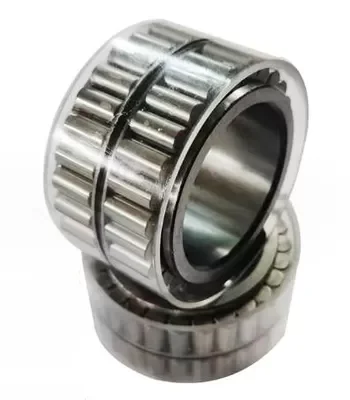- This topic is empty.
-
AuthorPosts
-
In mechanical design and maintenance, deep groove ball bearings are one of the most common bearing types. They are widely used in various rotating equipment due to their simple structure, high reliability, ease of achieving high manufacturing accuracy, and low cost. middle. However, choosing the right deep groove ball bearing is crucial to ensure smooth operation and extended service life of your equipment. This article will delve into several key factors in selecting the right deep groove ball bearing.

1. Understand the basic characteristics of deep groove ball bearings
Deep groove ball bearings are mainly used to bear radial loads and can also bear a small amount of axial loads. They are generally not suitable for high-speed operation but are ideal for low to moderate speed applications. The basic model consists of an outer ring, an inner ring, and a set of balls, and usually has two structures: open and closed.
2. Clarify load requirements
When selecting deep groove ball bearings, the first thing to determine is the type of load the bearing will be subjected to. This includes understanding the amount of radial load the bearing will support, and whether it will also need to handle axial loads. In addition, it should be evaluated whether the loading is static or dynamic and whether impact loading is present. This information is critical in determining the bearing's dynamic load rating and static load capacity.
3. Consider speed and operating conditions
Different deep groove ball bearings have different speed limits. Understand the maximum speed required by the application and select a bearing model that can accommodate that speed. In addition, operating conditions such as temperature, humidity, dust, and other environmental factors will also affect the performance of the bearings, so it is necessary to select bearings suitable for specific environments.
4. Determine the bearing size
Select bearing specifications based on shaft and seat hole dimensions. It should be ensured that the inner ring of the bearing can be smoothly placed on the shaft, and the outer ring can fit tightly into the seat hole. The width and diameter series of the bearings should also comply with the design requirements of the machine.
5. Calculate bearing life
The service life of a bearing is closely related to the load it bears, the use environment and maintenance conditions. Using the bearing life calculation formula, the expected life of the bearing under specific conditions can be estimated. When selecting, a certain safety margin should be left to ensure that the bearing will not fail prematurely.
6. Selection of materials and heat treatment
Material selection for deep groove ball bearings has a significant impact on performance. Bearing steel (such as GCr15) is the most commonly used material and has good wear resistance and hardness. For special needs, stainless steel or other alloy materials can also be selected. Heat treatment processes such as quenching and tempering can further improve bearing performance.
7. Preload selection
Depending on application requirements, deep groove ball bearings may need to be preloaded. Preload can improve the rigidity and rotational accuracy of the bearing, but it also increases friction and heat. Therefore, it is necessary to balance the size of the preload to avoid bearing damage caused by excessive preload.
8. Sealing and lubrication solutions
To protect bearings from contamination and reduce wear, it is crucial to choose the right sealing and lubrication solution. The lubricant can be oil or grease, and the sealing device can be an oil seal, a cover plate, or a rubber sealing ring. The best combination should be determined based on the working environment and protection level when selecting.
9. Installation and maintenance considerations
The installation method and maintenance convenience of bearings are also factors that cannot be ignored in the selection process. Bearings that are easy to install and maintain help lower maintenance costs and reduce downtime.
10. Refer to recommendations from manufacturers and suppliers
Finally, when faced with multiple options, refer to the recommendations of bearing manufacturers and suppliers. They usually provide detailed product catalogs and application guides that can help users make more appropriate choices.
To sum up, choosing a suitable deep groove ball bearing is a multi-faceted decision-making process that involves comprehensive consideration of multiple factors such as load, speed, size, life, material, preload, sealing and lubrication, installation and maintenance. Through the guiding principles discussed above, users can more confidently select deep groove ball bearings that meet their specific application needs, thereby ensuring efficient and stable operation of mechanical equipment.
-
AuthorPosts